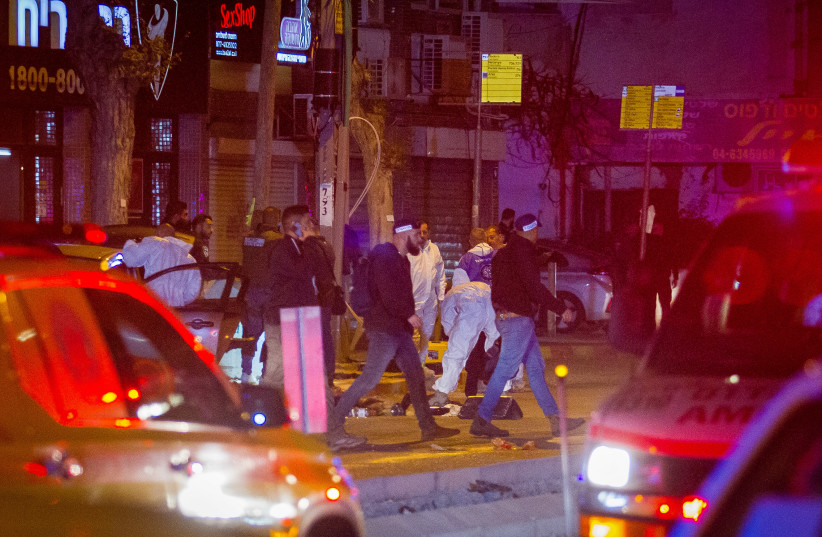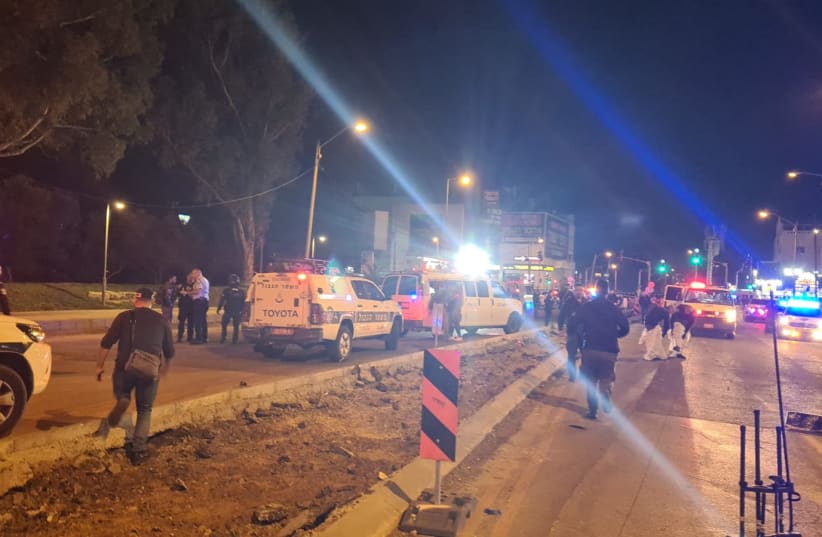Part of the challenge facing security forces in the face of the terrorist attacks over the past eight days has been their source: the perpetrators came from radically different sectors, and do not fit into a conventional box that holds a clear answer on what to do next.
The initial two terrorist attacks in Beersheba and Hadera were committed by Arab-Israelis inspired by ISIS.
Immediately, the Shin Bet (Israel Security Agency), IDF, Israel Police and other agencies started talking about refocusing their energies on tensions in the Arab-Israeli community.
Suddenly, everyone remembered the violence and riots that erupted within Israel proper during the May war with Hamas in Gaza.
Security officials said they would also shift to more actively tracking and reviewing the status of Arab-Israelis who had prior minor convictions related to links to ISIS. Included in this group would be those who volunteered to fight with ISIS in Syria against Bashar Assad’s regime, but not against Israel per se.


However, Hamas and Palestinian Islamic Jihad jumped on the bandwagon of the ISIS-inspired terrorist attacks, hoping to broaden the “appeal” and piggyback onto the new terrorism momentum.
Hamas has not only been encouraging terrorism in its public relations, but in facts on the ground: on March 7, for instance, it took credit for a terrorist stabbing attack on the Temple Mount, the second attack that week in the area of Jerusalem’s Old City.
People with short memories might say that this wave of terrorism is just ISIS/Arab-Israeli related, but Hamas is also plenty involved.
Then came Tuesday night’s attack in Bnei Brak involving a Fatah terrorist. And this is where some get lost regarding the nominal head of the Fatah movement.
Palestinian Authority President Mahmoud Abbas publicly and unequivocally condemned the attack, while a Fatah official in Jenin, where the attacker was from, praised it and celebrated with other supporters.
For those following terrorism trends closely, it is known that the Fatah movement is not heterogeneous.
Just as during the Second Intifada, when parts of Fatah aligned themselves with Hamas and violence while some remained anti-violence, that same discrepancy continues to this day.
Part of the reason for the variance, though, is more about geography than labels.
Large segments of the Palestinians are still dominated by clans and extended family links as much or more than the specific group they might join at a given moment.
So you might have two brothers or two cousins from the same clan who might join separate Hamas and Fatah groups due to different religious and secular outlooks.
But if a wave of violence is on the rise, or is already breaking out, they are just as likely to work together on logistics, arms and other issues as operatives within the same ideological group, because a family can cross over group affiliations.
Places like Hebron and Jenin have significant reputations for violence that can sweep up Palestinians from a variety of groups at a particular moment.
Depending on how much longer the current wave of terrorism goes, and certainly to deter its growth, differing strategies will be needed to address each of these groups: ISIS, Hamas and violent members of Fatah.
Sometimes the strategy will be a “big stick,” cracking down on their clan with arrests, weapons confiscations and administrative detentions. In the case of Hamas, there are also very specific power centers in the West Bank and Gaza that can be squeezed.
Other times, the answer may be more of a “carrot” approach, allowing more Palestinians from the West Bank or Gaza to work in Israel if and when things remain calm, or even rewarding calm areas with work passes and penalizing more violent areas with closures.
For Arab-Israelis, the process of eliminating organized criminal gangs and their weapons may finally accelerate, providing the needed attention it has missed.
At the same time, the government might accelerate long-delayed promises for new Arab-Israeli towns or expansion of building and infrastructure for existing towns, as well as improved education and services for helping unemployed Arab-Israelis find jobs.
This will be a complex effort requiring a rare mix of immediacy, patience and long-term commitment.
